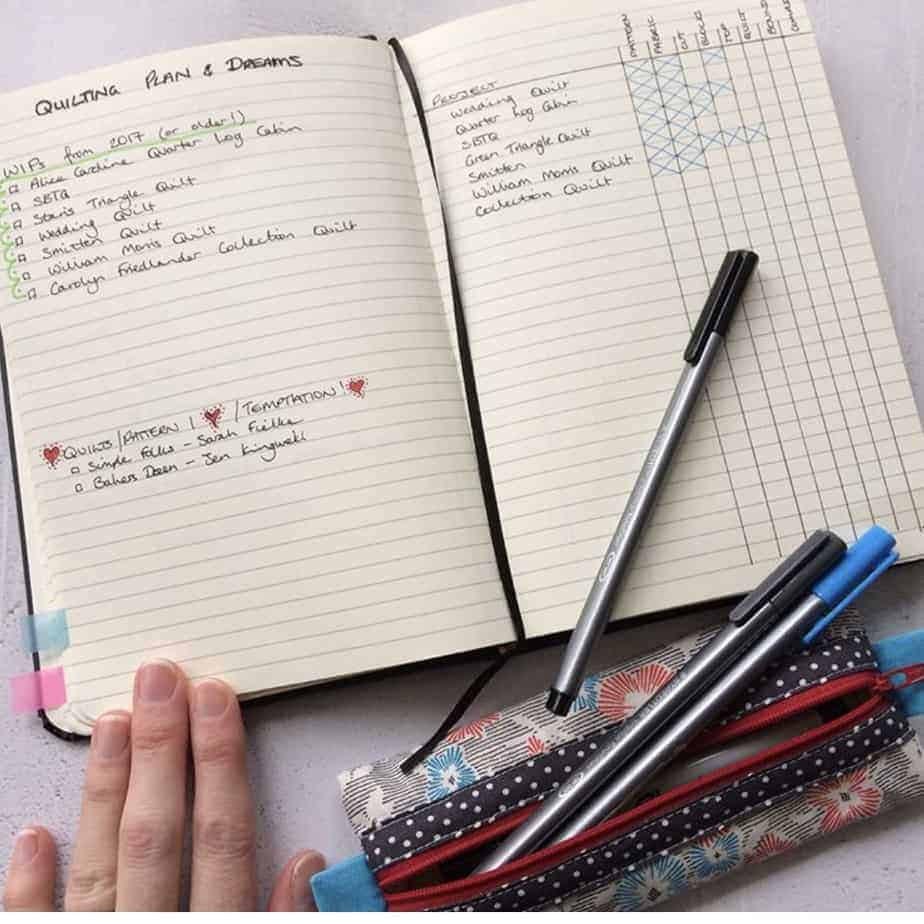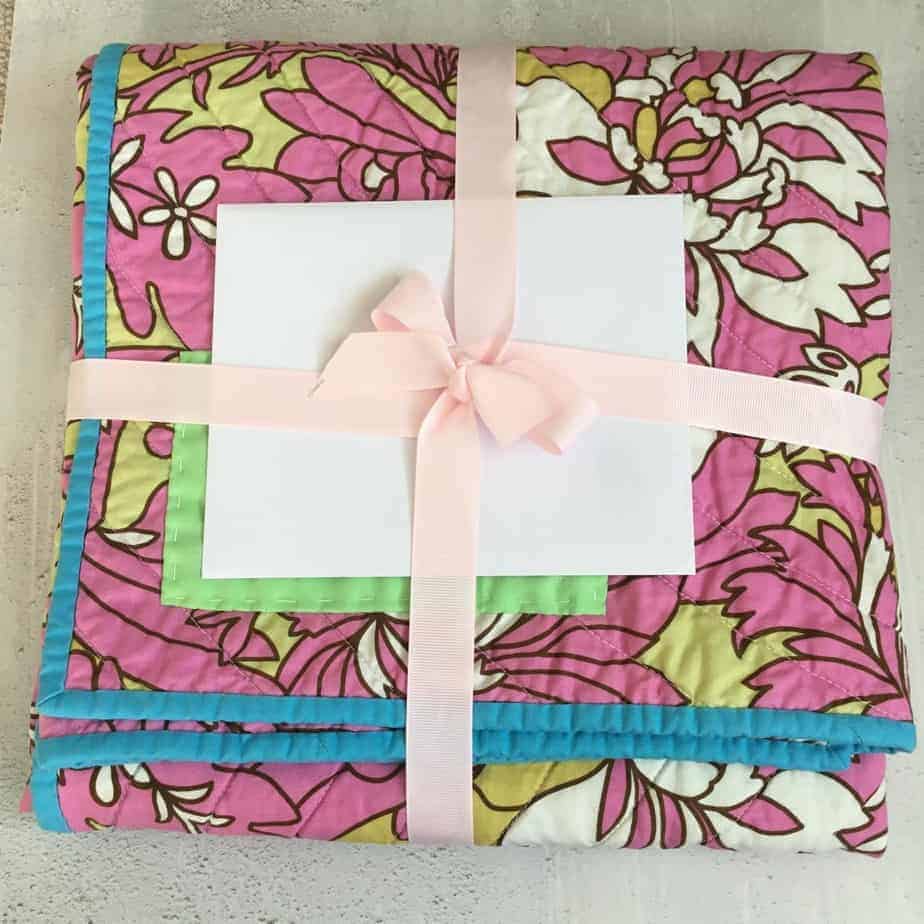Needle Turn Appliqué
Welcome to the the final stop on the English Country Garden Quilt sew along, where I’m going to be sharing one of my favourite techniques – needle turn appliqué – with you.
I am a huge fan of hand-sewing (you can read about my love of mindful stitching here) and one of the things that I love about needle-turn appliqué is how little equipment you really need for it, which makes it a great starting point for beginners (yes, really!) and sewing on the go.

NOTE: This post may contain affiliate links, which means if you make a purchase I may make a small commission at no extra cost to you. You can read my full disclosure privacy policy here. Thank you.
For all the other posts in the sew-along please use the links here;
- 22nd May – Topiary Garden by Lou Orth Designs { PATTERN / BLOG }
- 29th May – Dawn Chorus by Nicola from Cake Stand Quilts { PATTERN / BLOG }
- 5th June – The Potting Shed by Jo from The Crafty Nomad { PATTERN / BLOG }
- 12th June – Fluttering Florals by Sonia from Fabric and Flowers { PATTERN }
So, are you ready to find out all about Needle Turn Appliqué?!
Table of Contents
Equipment Needed
Firstly, let’s chat about what equipment you need for hand appliqué. These are my favourites and for the essentials – especially needle and thread – I would always recommend trying a few to find your favourites: I prefer a shorter needle and fine thread for hand-stitching, but you may prefer a longer needle. It’s all about experimentation!
- Needles: appliqué needles are nice and sharp, making them perfect for hand-stitching, these ones are my current favourites.
- Thread: I generally use Aurifil Thread for quilting. For hand-piecing and applique I like to use 80wt (you can find out more about the differences in thread weights) and my favourite colour is 2375 as it seems to disappear against light and dark fabrics. Genius!
- Appliqué Pins: you can use any pins, but these ones are my go-tos – they’re small and sharp, which means they don’t get in the way as much when you’re stitching (and you’re less likely to feel like you’re handling a prickly hedgehog!).
- Pencil or Silver Gel Pen: you can get specialist markers for fabric, but in all honesty my favourite is a mechanical pencil! I can guarantee it’s always sharp, they’re handy for carrying around and are easy to get a hold of. Silver Gel Pens are a good alternative, especially for using on dark fabrics and the ink rubs off over time.
Getting Started
If you’re doing appliqué, chances are that you are using templates as you are cutting and stitching an irregular shape. For some common shapes, for example circles, you can get plastic templates. But often you will need to make your own.
For the Fluttering Floral blocks, print out the templates and and stick them to cardboard (I always use old cereal packets) before cutting them out. This gives you a firm edge to draw around. If you are going to be cutting lots of the same shape or you want to do fussy cutting, you may prefer to use mylar plastic which is opaque and a bit more durable. I tend to use cardboard because it’s what I have to hand!
For appliqué, templates are generally provided without a seam allowance. Place the template on the front of your fabric and draw around the edge of your shape. This is your sewing line.
When cutting the shape out, remember to leave a seam allowance of about 1/8″-1/4″ for turning under. I tend to leave a slightly bigger seam allowance than I will need – especially if prepping in advance as it allows for a little bit of fraying and I can then trim down when I’m actually sewing in position.
Once you have cut out your pieces, you are ready for the next step…..
Prepping Fabric Pieces for Stitching
There are a few different ways of prepping your fabric pieces for stitching. The first time I tried needle-turn applique, I found it so fiddly to turn the fabric under using a needle, and so after a bit of trial and error I have two main methods for prepping my fabric pieces for stitching.
For the majority of shapes, my favourite technique is to turn the seam allowance under (so that the fabric is wrong side to wrong side) and finger press to crease along the sewing line. By doing this, the fabric already has a ‘memory’ of how the fabric should be folded under and it makes it much easier to use the needle to turn the fabric under and smooth out any ‘pinches’ in the fabric.

For circles and ovals there are a couple of methods I like to use;
- Sew a running stitch around the outside of the shape (within the sewing allowance), place the cardboard template in the centre of the fabric and gently pull the thread to gather the stitches and pull the fabric over the top of the shape. Secure the thread and press with an iron to set. When you’re ready to stitch you can snip the threads in a few areas, gently remove the template and then attach to your background fabric to stitch.
- Place the fabric right side down on a piece of tinfoil and then place the cardboard template in the centre. Gently gather the tinfoil up to fold the seam allowance up and over the edge of the template. Once you’ve worked your way around the whole of the template use an iron to press around the edge of the tinfoil shape. Allow to cool before unwrapping the tinfoil and removing the template. This technique works particularly well for circles if you have lots to make (I share more detail in a YouTube video here).
Tips for Needle Turn Appliqué
Following the pattern instructions, place your shapes on to your background piece. For small shapes like we are using in the Fluttering Floral blocks, you can secure the fabric
Where possible, always start in the centre of a straight edge/long curve. I like to secure the thread by completing a couple of stitches on the background fabric just inside the edge of where my appliqué will be going, and then slip-stitch your way around the edge of the shape.
When you come to any sharp/inverted points like on the butterfly patches, it’s always worthwhile to secure the seam line by doing a couple of stitches before going on to the next step of trimming the seam allowance.


Troubleshooting Needle Turn Appliqué
- The thread keeps getting tangled as you’re sewing
- Make sure the thread is no longer than then length of your arm.
- I have found for finer threads especially that running it through a thread conditioner/bees wax really helps to minimise the knots and tangles that I get.
- Struggling to get a smooth curve
- Check the size of your seam allowance – ideally it should be between 1/8-1/4″ so that the extra fabric eases in smoothly. On a smaller shape/tighter curve, aim towards more of a 1/8″ seam allowance – the outside edge of the curve is always going to be bigger than the sewing curve, so a smaller seam allowance helps because you’re not trying to turn under too much fabric and you’re less likely to get ‘tucks’.
- Try one of the other techniques I’ve listed above to see if it works better for you.
- Getting a sharp point on a shape
- Always make sure to secure your stitches (a couple of stitches in the same place works really well) at the end of the seam before trimming any excess fabric.
- To start with, fold back the fabric to reveal the ‘dog-ear’ of fabric and trim carefully using sharp scissors.
- Grade the seam-allowance fabric at a slight angle so that there is less fabric to try and fit into a small point. Use something sharp (I like the tip of my scissors) to tuck the fabric under before continuing with your stitches – you can always do stitches closer together by the point to secure the fabric.



Let me know how you get on with these tips and don’t forget to get your Fluttering Florals pattern here to put all of these tips into action!
S x
Today’s sky::: a bit cloudy and hot!
If you would like monthly news and updates, please sign-up to my newsletter.
To check out my quilt and accessories patterns, visit my Pattern shop.
For my favourite sewing equipment and tools, visit my Amazon store.





